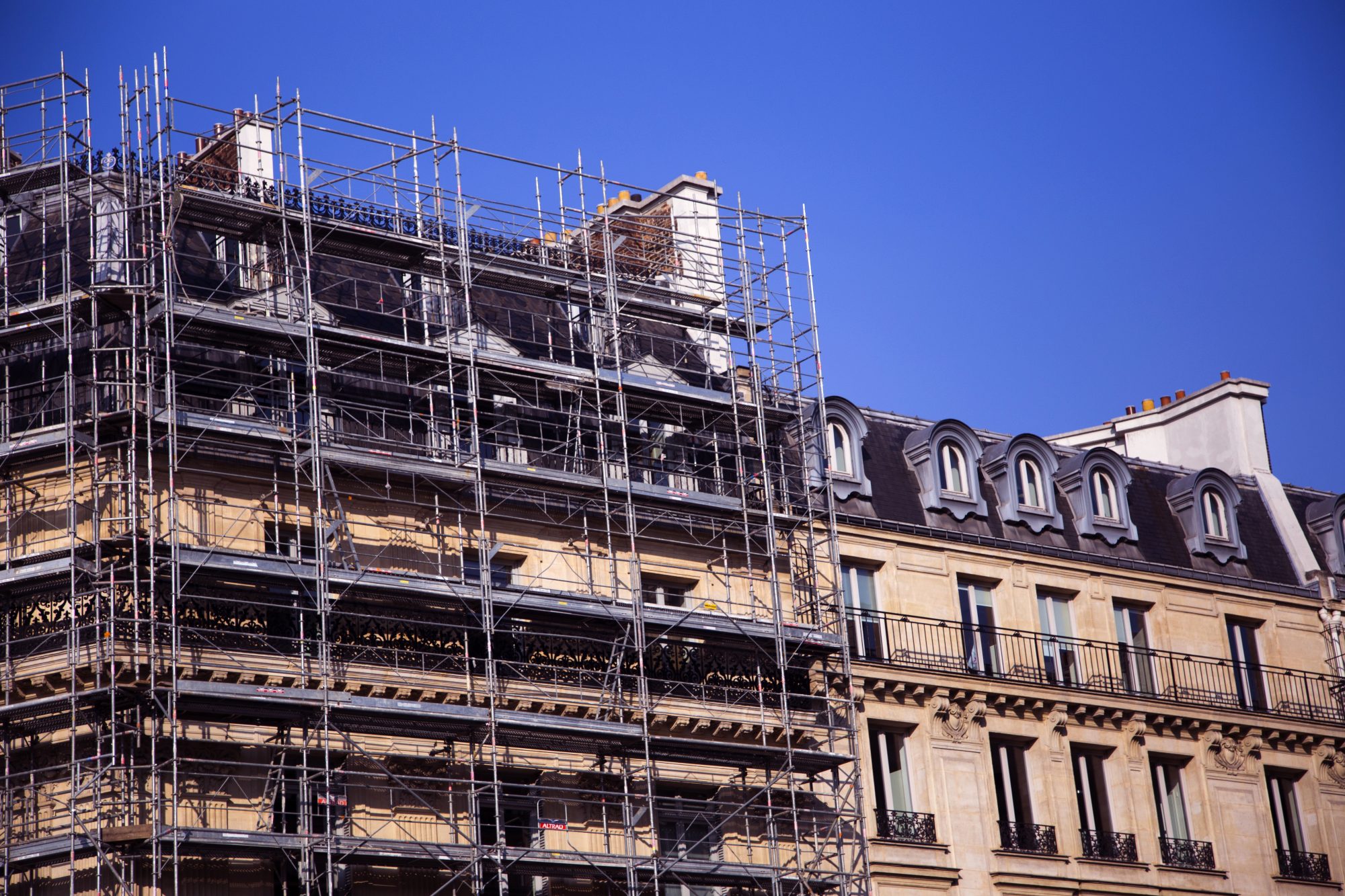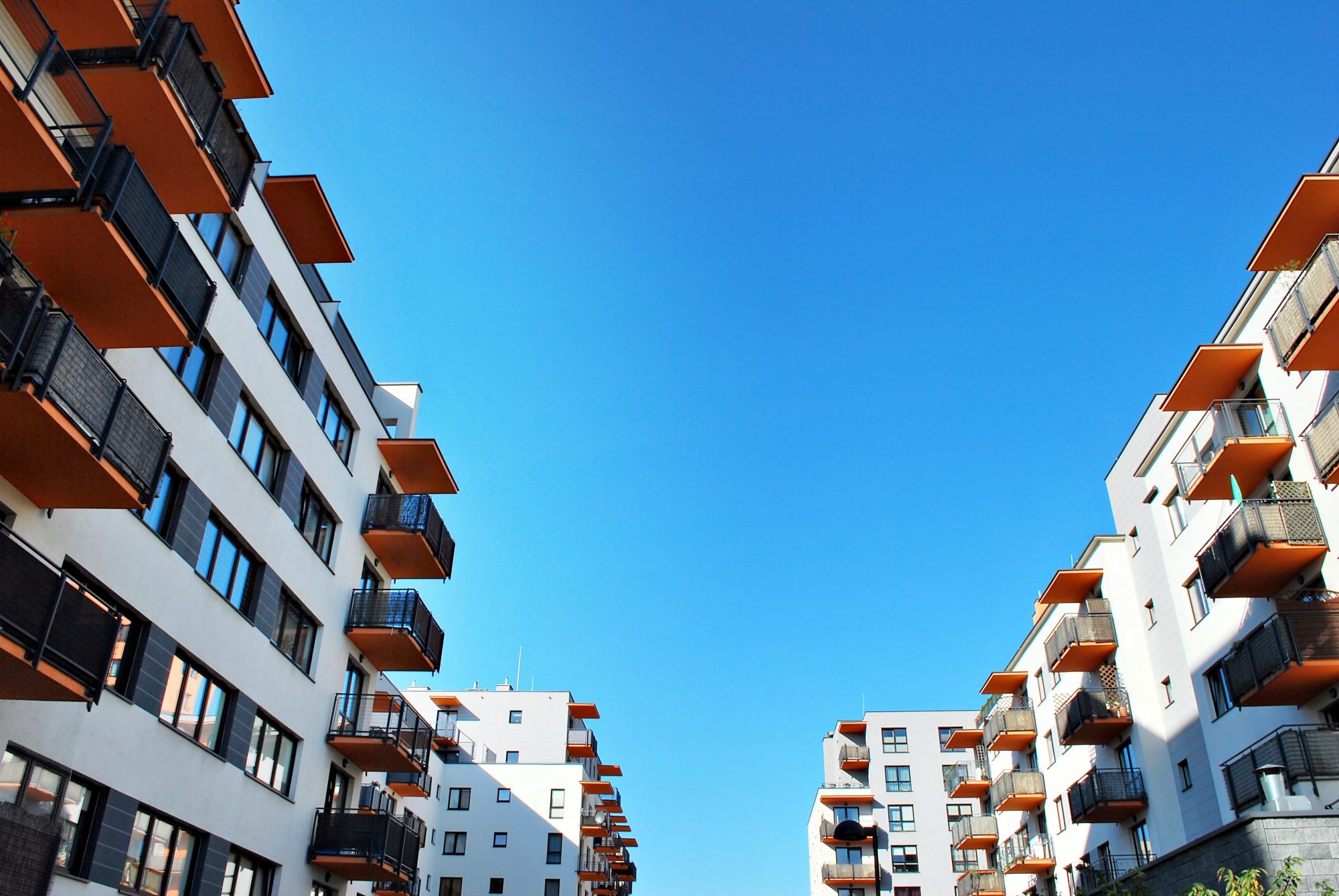The climate is right for Deep Renovation
We spent 90 per cent of our time inside. Time to think about how that affects local and global sustainability, how deep renovation can change that and what our city should do.
In the struggle of reducing CO2-emissions and becoming more energy efficient, increasing renovation rates is crucial for reaching the ambitious EU-targets. While “shallow” superficial renovations achieve 20 to 30 per cent in energy savings, deep renovation promises at least 60 per cent. In combination with extensive energy efficiency measures and a high share of renewable energy, deep renovation could be significant to meet those targets. Cities are going to play an important role.
May it be for work, school or just to relax at home – most people spend a lot of time inside. 90 per cent of their day for Europeans on average. Accordingly, a lot of energy consumption results from this fact. Especially for older buildings, there is huge potential for saving energy, thus also for reducing CO2-Emissions and to save cash – potential slumbering away unexploited in many cases. The list of benefits of a high renovation rate is quite impressive: Besides from major savings in energy and CO2, it reduces dependencies from fossil fuels, improves comfort and increases the value of a house directly. Additionally, a better climate in a building has positive health effects. Indirectly, deep renovation brings economic benefits, not only by creating jobs, but also by promoting green growth and technology development.
In order to achieve the EU 2020 targets (reduce GHG emissions by 20 per cent and increase energy efficiency by 20 per cent compared to 1990 levers) the commission aims to increase renovation rates to two to three per cent. Yet, Europe-wide rates lag behind with approximately 1.2 per cent only.
Building renovation

Why is large-scale deep renovation so challenging?
According to the Building Performance Institute Europe (BPIE), the problem in starting off deep renovation projects at large scale lies in different challenges that have to be faced by various stakeholders. The first and perhaps biggest barrier is the financing of renovation processes. Many low and middle-income residents just do not have the resources for investing in better quality housing.
Another problem are institutional and administrative obstacles: the European construction sector is fragmented, which makes it hard to efficiently uptake integral solutions for high-quality deep renovation, while administrative barriers often complicate the process additionally.
In many cases, building owners are not aware about costs and benefits of renovation projects. Because of the broad range of regulations, funding schemes and other economic factors, as well as a lack of information and advice, many building owners shrink back from such projects.
Additionally, the separation of expenditure and benefits makes renovation less beneficiary. This is because of the supply driven structure of the market, leading to a mismatch between offered products and the dwellers actual needs in context of their financial capacities.
What’s the cities role?
Often, a city offers the best administrative level to set important steps to promote deep renovation. Additionally, being a front-runner in deep renovation processes offers a huge economic potential. Cities make up the biggest share of energy consumption, thus they are crucial in order to improve national energy efficiency in accordance to EU-targets.
Deep renovation projects rarely fail due to a lack of technical feasibility but rather on a social dimension, conflicts of interest and insufficient information and communication. The BPIE’s observations clearly show a need for awareness raising and innovations in capacity building as well as more innovative financial-, economic-, and regulatory frameworks. A major challenge also lies in the high diversification of the deep renovation value chain with stakeholders.
Cities can tackle these barriers by stimulating demand for renovation amongst consumers. Instruments can be targeted policies, awareness campaigns as well as local action plans and workshops to bring stakeholders and professionals together. An Urbact-Report emphasizes “the need for more systemic, multi-scale and transverse approaches to deal with the intrinsic complexity of the urban fabric.” A “one-fits-all” solution does not exist.
Cities have to internalize the fact that they are not just an aggregation of buildings, especially when it comes to sustainability issues like energy efficiency. Although awareness about addressing these issues locally has grown in the last decades and also affected urban planning and policies, many cities seem to be overstrained with initiating deep renovation.
Modern, Luxury Apartment Building

How Porto made it work
Of course, one city’s solution will not apply directly to another, but best practices can help to stimulate the process of thinking. One of them is Porto: The city’s Sustainable Energy Action Plan (SEAP) targeted to reduce CO2-emissions by 45 per cent and increase energy efficiency by 20 per cent by 2020 (compared to 2004 levels). The local energy agency AdEdPorto was entrusted with designing and implementing SEAP.
For Portos deep renovation project, it was planned to renew Rainha Dona Leonor, a neighborhood of 150 multi-family dwellings with a heated area of 5,000m2. The concrete structure, light weight slabs and brick walls had not been upgraded since they were built in 1953. So, demolishing all buildings was an option too, but the city council decided to undertake deep renovation works in 2009.
Table with view a wonderful view over the river in Porto, Portugal.

The main purpose of the renovation was to improve the livability of the area and restoring the original city scape (by subtracting illegally constructed elements). Additionally to updating the buildings to modern standards, the neighborhood’s structures were improved by making outdoor areas more attractive (playground and circulation areas). However, complying with current thermal regulations led to strong improvements in energy performance. Modern cooling and heating facilities, implementing solar thermal energy and a variety of other measures resulted in saving 12.9 tons of CO2-emissions primary energy savings of 286.54 kW/hm2 annually.
The renovations were finished in 2014 and cost 17.3 million Euros, funded by Porto’s own resources. The increase in rents, following the renovation could be offset by a decrease of 70 per cent in energy costs for residents. Today, Rainha Dona Leonors residents enjoy not only a better climate and more energy efficiency in their homes, but also better living conditions through more space and comfort, improved natural lightning and more qualified living spaces. The neighborhood itself recovered a new and self-conscious identity. Today, Rainha Dona Leonors is one of Porto’s most livable and best social neighborhoods.

